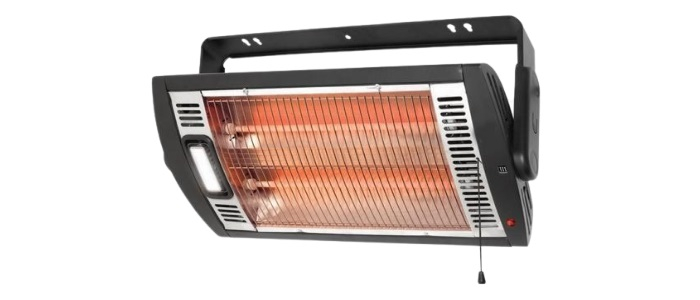
 Data Structure
Data Structure Networking
Networking RDBMS
RDBMS Operating System
Operating System Java
Java MS Excel
MS Excel iOS
iOS HTML
HTML CSS
CSS Android
Android Python
Python C Programming
C Programming C++
C++ C#
C# MongoDB
MongoDB MySQL
MySQL Javascript
Javascript PHP
PHP
- Selected Reading
- UPSC IAS Exams Notes
- Developer's Best Practices
- Questions and Answers
- Effective Resume Writing
- HR Interview Questions
- Computer Glossary
- Who is Who
What is Infrared Heating or Radiant Heating?
In the infrared or radiant heating, the heating elements are of tungsten filament lamps operating at about 2400 °C. As at this high temperature a greater portion of infrared radiation is given to the object for heating. In this method of heating, the heating effect on the object is greater because the temperature of the heating element is greater.

With the help of suitable reflectors, which are plated with rhodium, these infrared radiations are focused on the surface to be heated. The lamps used for the heating purposes in this method have ratings varying from 250 to 1000 watts operating at 115 Volts. The lower operating voltage results in robust filament. With this arrangement, the body temperature obtained is between 200 to 300 °C and the heat emission intensity obtained is about 7000 W/m2.
In infrared heating, the heat absorption remains practically constant whatever the temperature of the object. For getting best results, the infrared lamps (source of heat) should be located at a distance of 25 to 30 cm from the body to be heated.
Advantages of Infrared Heating
The advantages of infrared heating in comparison to other types of electric heating are given as follows −
Infrared heating units are compact, i.e. smaller in size.
Rapid heating can be obtained with the infrared heating method.
Infrared heating provides flexibility over the other methods of electric heating.
High efficiency conversion of electrical energy into heat.
Heats only the object without heating the surroundings.
Infrared heating provides ease of control.
No placement of pipes needed for the installation of infrared heating panels.
The effect of infrared heating can be felt almost immediately after switching on the panels.
Disadvantages of Infrared Heating
The disadvantages of the infrared heating are given as follows −
There are some safety issues with the infrared heating that needs to be considered.
Infrared heaters always emit orange colour as they distribute heat to the environment. This colour has some side effects.
An infrared heater will stop radiating heat the moment the heating unit turns off.
Infrared heating produces infrared heat waves, which may cause some skin health problems.
Applications of Infrared Heating
The main applications of the infrared or radiant heating are as follows −
Infrared heating is used for low temperature heating of plastics.
Infrared heating is used for drying of wet paints.
Infrared heating is used for various dehydration and other processes.
Infrared heating is also used for drying wood furniture.
For drying of pottery, paper, textiles, etc. where moisture content is not large, the infrared heating is employed.

